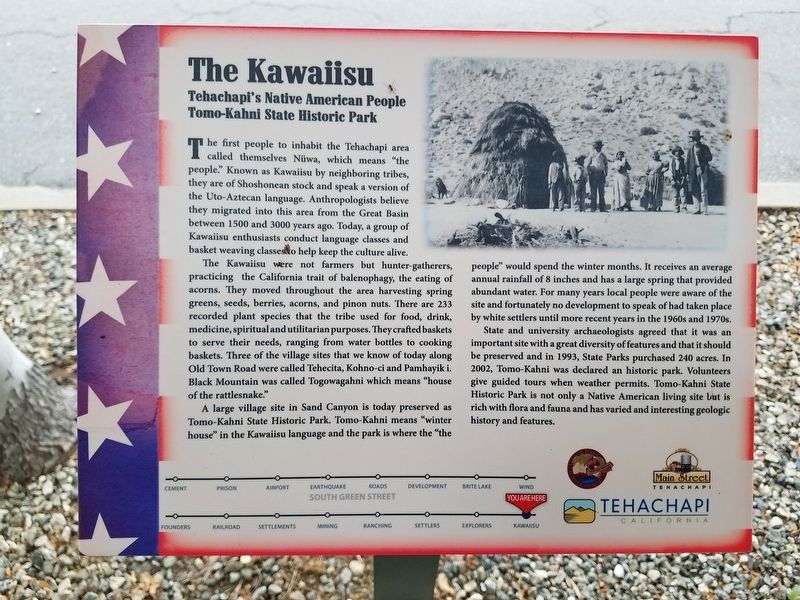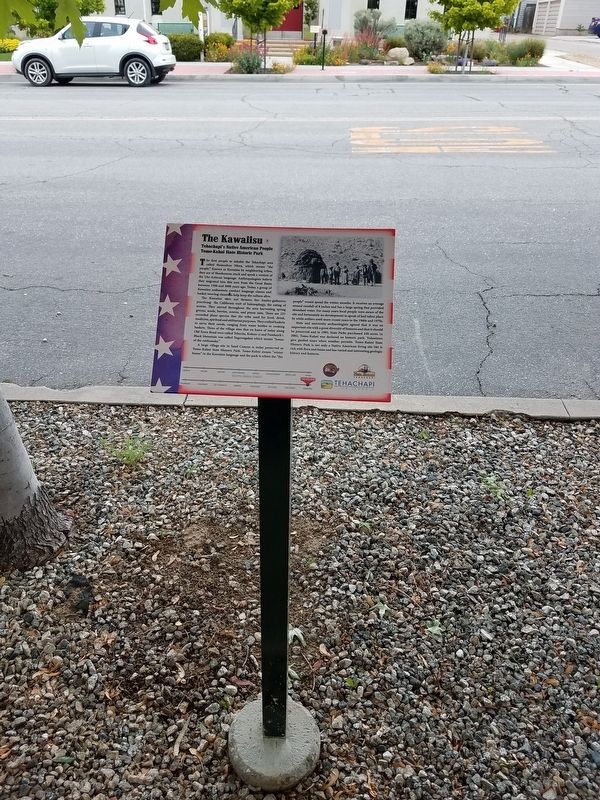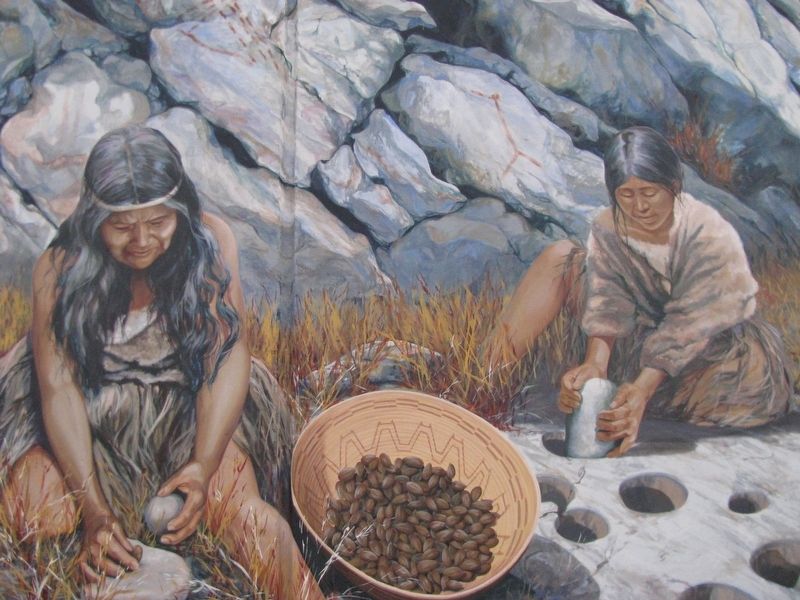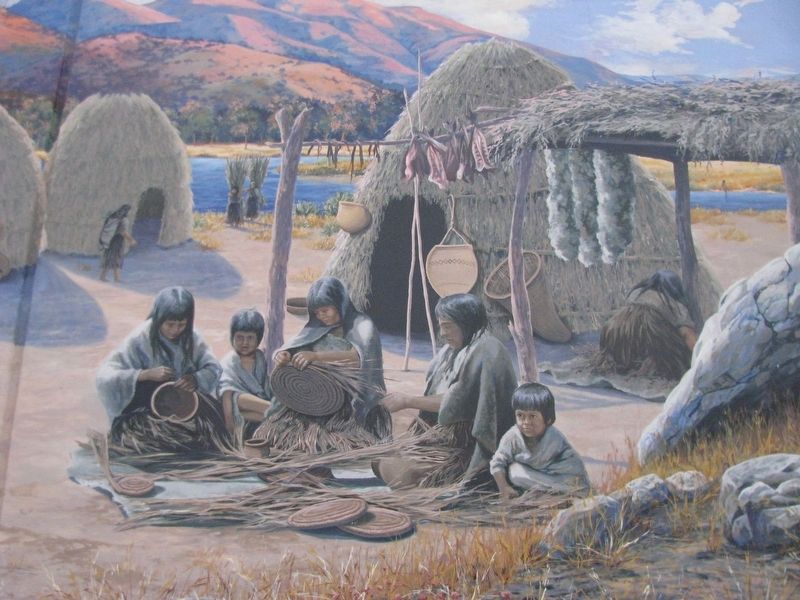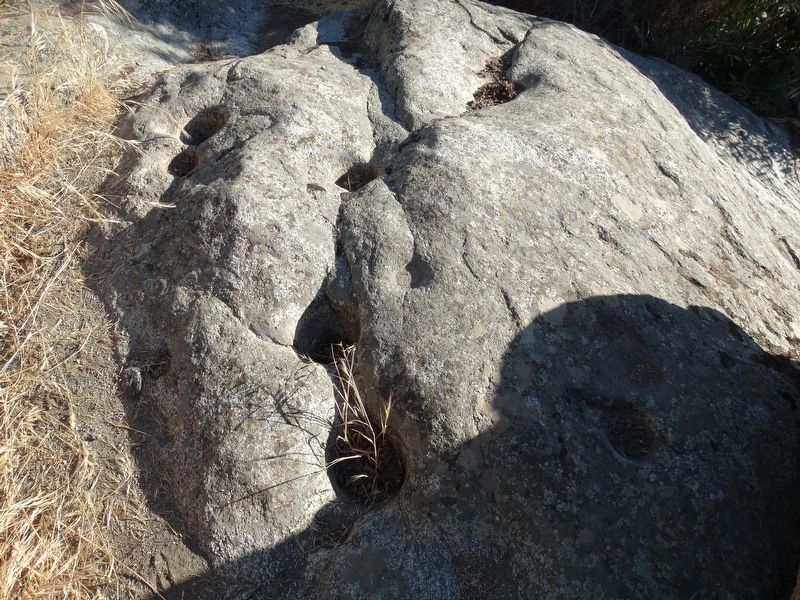Tehachapi in Kern County, California — The American West (Pacific Coastal)
The Kawaiisu
Tehachapi's Native American People
— Tomo-Kahni State Histori Park —
The Kawaiisu were not farmers both hunter-gatherers, practicing the California trait of balenophagy, the eating of acorns. They moved throughout the area harvesting spring greens, seeds, berries, acorns, and pinon nuts. There are 233 recorded plant species that the tribe used for food, drink, medicine, spiritual and utilitarian purposes. They crafted baskets to serve their needs, ranging from water bottles to cooking baskets. Three of the village sites that we know of today along Old Town Road were called Tehecita, Kohno-ci and Pamhayik i. Black Mountain was called Togowagahni which means “house of the rattlesnake.”
A larger village site in Sand Canyon is today preserved at Tomo-Kahni State Historic Park. Tomo-Kahni means “winter house” in the Kawaiisu language and the park is where the “the people” would spend the winter months. It receives an average annual rainfall of 8 inches and has a large spring that provided abundant water. For many years local people were aware of the site and fortunately no development to speak of had taken place by white settlers until more recent years in the 1960s and 1970s.
State and university archaeologist agreed that it was an important site with a great diversity of features and that it should be preserved and in 1993, State Parks purchased 240 acres. In 2002, Tomo-Kahni was declared an historic park. Volunteers give guided tours when weather permits. Tomo-Kahni State Historic Park is not only a native American living site but is rich with flora and fauna and has varied and interesting geologic history and features.
Erected by Main Street Tehachapi, Tehachapi Heritage League and The City of Tehachapi.
Topics. This historical marker is listed in these topic lists: Native Americans • Settlements & Settlers. A significant historical year for this entry is 1500.
Location. 35° 7.771′ N, 118° 26.888′ W. Marker is in Tehachapi, California, in Kern County. Marker is on Green Street, on the left when traveling north. Touch for map. Marker is at or near this postal address: 311 S Green St, Tehachapi CA 93561, United States of America. Touch for directions.
Other nearby markers. At least 8 other markers are within walking distance of this marker. Errea House (here, next to this marker); Wind Energy Industry (a few steps from this marker); The Tehachapi Museum (a few steps from this marker); a different marker also named Tehachapi Museum (a few steps from this marker); Early Explorers in the Tehachapi Area (within shouting distance of this marker); Importance of Water and Creation of Brite Lake (within shouting distance of this marker); Real Estate Development Since The 1960s (within shouting distance of this marker); August Weferling House (within shouting distance of this marker). Touch for a list and map of all markers in Tehachapi.
Credits. This page was last revised on October 26, 2022. It was originally submitted on May 29, 2019, by Denise Boose of Tehachapi, California. This page has been viewed 682 times since then and 129 times this year. Photos: 1, 2, 3, 4, 5. submitted on May 29, 2019, by Denise Boose of Tehachapi, California. • Andrew Ruppenstein was the editor who published this page.
